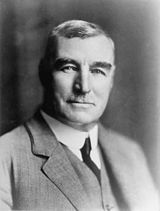New Zealand general election, 1935
|
|
|||||||||||||||||||||||||||||||||||||||||||||||||||||||||||||||||||||||||||||
|---|---|---|---|---|---|---|---|---|---|---|---|---|---|---|---|---|---|---|---|---|---|---|---|---|---|---|---|---|---|---|---|---|---|---|---|---|---|---|---|---|---|---|---|---|---|---|---|---|---|---|---|---|---|---|---|---|---|---|---|---|---|---|---|---|---|---|---|---|---|---|---|---|---|---|---|---|---|
|
|||||||||||||||||||||||||||||||||||||||||||||||||||||||||||||||||||||||||||||
|
|
|||||||||||||||||||||||||||||||||||||||||||||||||||||||||||||||||||||||||||||
|
All 80 seats in the New Zealand Parliament 41 seats were needed for a majority |
|||||||||||||||||||||||||||||||||||||||||||||||||||||||||||||||||||||||||||||
|
|||||||||||||||||||||||||||||||||||||||||||||||||||||||||||||||||||||||||||||
|
|||||||||||||||||||||||||||||||||||||||||||||||||||||||||||||||||||||||||||||
The 1935 New Zealand general election was a nationwide vote to determine the shape of the New Zealand Parliament's 25th term. It resulted in the Labour Party's first electoral victory, with Michael Joseph Savage becoming the first Labour Prime Minister. The governing coalition, consisting of the United Party and the Reform Party, suffered a major defeat, attributed by many to their handling of the Great Depression. The year after the election, United and Reform took their coalition further, merging to form the modern National Party.
The election was originally scheduled to be held in 1934, in keeping with the country's three year election cycle. The governing coalition postponed the election by one year in the hope that the current economic conditions would improve by 1935.
Since 1931, New Zealand had been governed by a coalition of the United Party and the Reform Party, the United-Reform Coalition. United and Reform had traditionally been enemies – United was a revival of the old Liberal Party, a progressive party with a strong urban base, while Reform was a conservative party with a strong rural base. When the 1928 elections left United and Reform with an equal number of seats, United managed to obtain support from the growing Labour Party, but in 1931, the worsening depression prompted a dispute over economic policy, and Labour withdrew its backing. Reform then agreed to go into coalition with United, fearing that an election would lead to significant gains for the "socialistic" Labour. The coalition held on to power in the 1931 elections, but the ongoing economic troubles made the government deeply unpopular, and by the time of the 1935 elections, Labour's support was soaring.
...
Wikipedia




